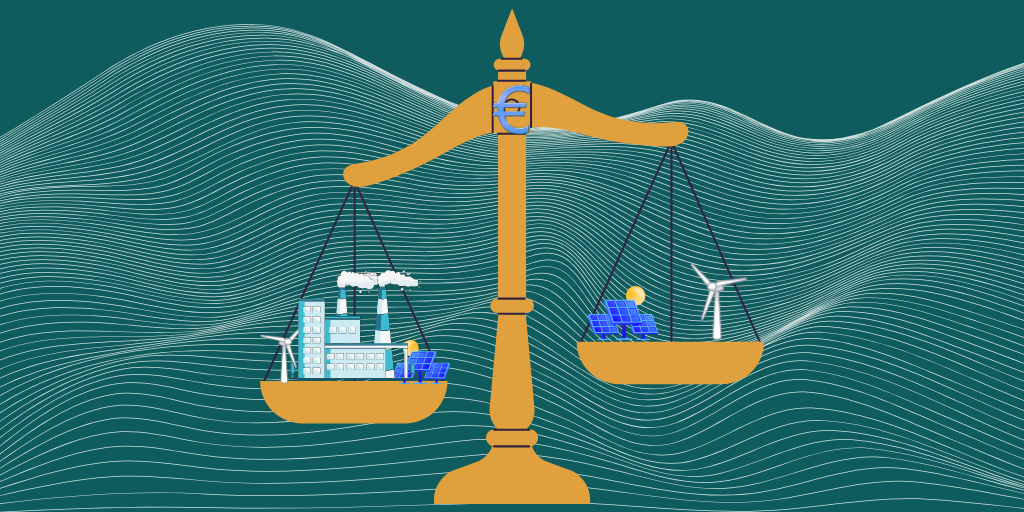Three investments of particular concern:
- EUR 20 million has been allocated for heat and electricity production in Poland, earlier such investments have been used primarily to back fossil gas projects at a time when gas dependency must be reduced.
- EUR 150 million will support a renewable energy scheme in Romania that allows funding for small but harmful hydropower projects. Such projects, including in Romania, have already caused environmental damage with questionable energy gains.
- EUR 37 million is going to hydrogen-powered buses in Greece, a technology that has already proven too costly and inefficient to operate in previous attempts around Europe.
Bankwatch has long been calling on both EU and national authorities to eliminate support for dirty energy via the Modernisation Fund, and this disbursement round has the smallest share of unsustainable projects and schemes so far, chiefly fossil gas.
Intended to utilise revenues from EU emission trading to catalyse the energy transition in 13 lower-income member states, the little-acknowledged Modernisation Fund has simultaneously been extending hefty support to fossil gas and other forms of dirty energy.
Between 2021 and 2024, the Modernisation Fund has handed out at least EUR 4.2 billion to dirty energy – roughly half of this amount just to fossil gas – according to a Bankwach report1 released in early May. This analysis found that between 27% and 44% of the Modernisation Fund’s total investments have gone to anything from biomass-fired heating plants to waste incinerators to fossil gas pipelines primarily in Romania, Czechia and Poland. And several governments have indicated they’re seeking billions more from the Modernisation Fund for similar projects and schemes in coming years.
Crucially, part of the reason that national authorities and the Modernisation Fund’s governing bodies are able to allow investments that run counter to the Fund’s very purpose is the lack of public scrutiny. Despite civil society calls to increase public participation and transparency, even in the current disbursement round, several investments lack detail to assess whether they might in the end support fossil gas or biomass combustion, both technologies run contrary to the stated aims of the Fund.
Gligor Radečić, gas campaigner with CEE Bankwatch Network, says:
“It is encouraging to see that significant funding was disbursed to genuinely necessary projects. However, unless the rules are changed to prohibit fossil gas and other false solutions from getting EU climate money, there is no guarantee that the Modernisation Fund’s next investments continue in this direction.
“Unfortunately, up to now, this Fund was treated by its beneficiaries as a dumping ground for projects that wouldn’t qualify for support under other EU funding streams. This should not be allowed.”
The Commission is currently reviewing the rules governing the Modernisation Fund. This is an opportunity to ensure that EU climate money doesn’t end up entrenching countries’ dependence on fossil gas and false solutions. For instance, by introducing a binding emission reduction threshold for all potential investments could help prevent EU money from being spent on the wrong kinds of energy infrastructure.
For more about Bankwatch’s campaign on the Modernisation Fund, see here: https://bankwatch.org/modernisation-fund
For more information please contact:
Gligor Radečić, Gas campaigner, CEE Bankwatch Network
Footnotes:
1 Keeping the flame alive with emission revenues: How the EU Modernisation Fund props up fossil gas and waste incineration (May 2025) https://bankwatch.org/publication/keeping-the-flame-alive-with-emission-revenues-how-the-eu-modernisation-fund-props-up-fossil-gas-and-waste-incinerationf
Never miss an update
We expose the risks of international public finance and bring critical updates from the ground – straight to your inbox.
Institution: EU
Theme: Modernisation Fund | fossil gas | energy transition
Location: EU
Project: Fossil gas | Modernisation Fund
Tags: Modernisation Fund

